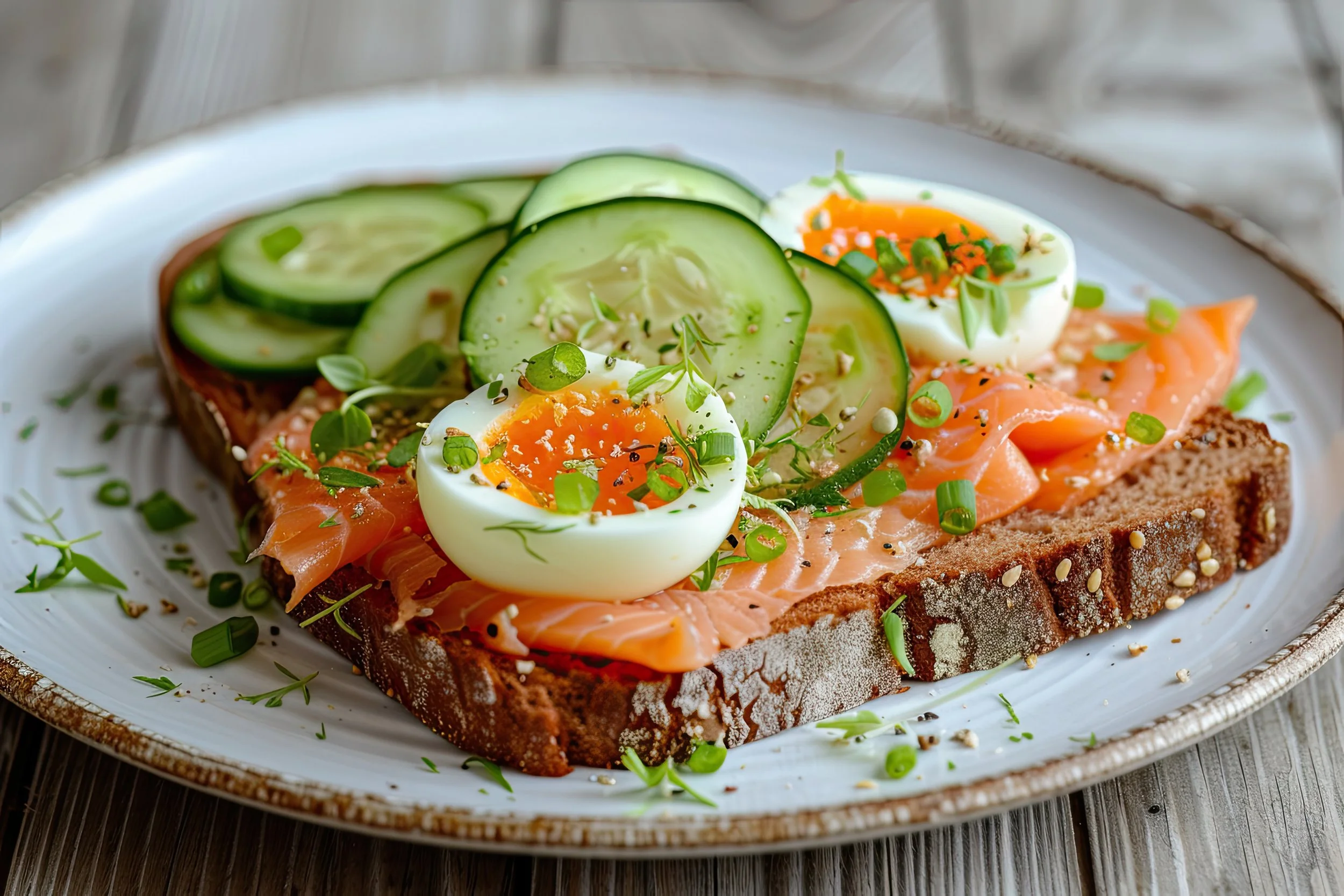Nordic and Scandinavian Cuisines
The flavor profiles of Scandinavia are influenced by the region's geography, climate, and culinary traditions. While Scandinavian cuisine varies across countries like Sweden, Norway, Denmark, Finland, and Iceland, there are some common ingredients and spices that are frequently used:
Fish and Seafood: Given the proximity to the sea, fish and seafood play a significant role in Scandinavian cuisine. Common varieties include salmon, herring, cod, mackerel, and shrimp.
Root Vegetables: Root vegetables such as potatoes, carrots, turnips, and beets are staples in Scandinavian cooking. They are often used in soups, stews, and side dishes.
Berries: Scandinavia is known for its abundant berry harvests, including lingonberries, cloudberries, bilberries (like blueberries), and raspberries. These berries are used in desserts, jams, sauces, and beverages.
Grains and Bread: In Scandinavian cuisine, rye and oats are commonly used grains. Rye bread is a staple in the region and comes in various forms, such as dark, dense loaves or crisp bread.
Dairy Products: Dairy products like butter, cheese, and yogurt are essential to Scandinavian cuisine. Cream is often used in sauces and desserts, and sour cream is a popular accompaniment to many dishes.
Meat: While fish and seafood are prominent, Scandinavian cuisine includes meat such as pork, beef, lamb, and game meats like reindeer and elk. Meat is often preserved through techniques like smoking, curing, or pickling.
Herbs and Spices: Dill, parsley, chives, and juniper berries are commonly used herbs in Scandinavian cooking. Spices are typically used sparingly but may include cinnamon, cardamom, cloves, and ginger, particularly in sweet dishes and baked goods.
Preservation Techniques: Traditional Scandinavian cuisine includes various preservation techniques such as smoking, curing, pickling, and fermenting. These methods not only preserve food but also impart unique flavors to dishes.
Scandinavian cuisine emphasizes fresh, seasonal ingredients, simplicity, and a balance of flavors. While some dishes lean towards simplicity, others showcase complex flavors, particularly in traditional celebrations and festive occasions.
New Nordic Cuisine
The New Nordic Cuisine movement emerged in the early 2000s, with its roots tracing back to a manifesto called the "Manifesto for the New Nordic Kitchen," written by a group of Scandinavian chefs in 2004. This manifesto aimed to promote a culinary philosophy centered around regionalism, sustainability, seasonality, and innovation. The movement sought to redefine Nordic cuisine by focusing on the region's unique flavors, ingredients, and culinary traditions.
Here's a brief overview of the history and key developments of New Nordic Cuisine:
Early Influences: Before the New Nordic Cuisine movement formalized, notable chefs and restaurants in the Nordic countries were already experimenting with local ingredients and traditional techniques. Chefs like Claus Meyer in Denmark and Gunnar Karl Gíslason in Iceland were early proponents of local and seasonal produce.
Manifesto for the New Nordic Kitchen: In 2004, a group of Scandinavian chefs, including René Redzepi of Noma in Copenhagen, Claus Meyer, and others, drafted the manifesto, which outlined the principles and values of the New Nordic Cuisine movement. It emphasized using local, seasonal ingredients, rediscovering traditional Nordic flavors, and sustainable practices.
Noma's Rise to Prominence: Noma, opened in 2003 by René Redzepi and Claus Meyer, played a pivotal role in popularizing New Nordic Cuisine. Noma quickly gained international acclaim for its innovative approach to Nordic ingredients and culinary techniques. It was consistently ranked as one of the best restaurants in the World, earning two Michelin stars and multiple awards.
Global Influence: The success of Noma and the New Nordic Cuisine movement inspired chefs and restaurants worldwide to embrace similar principles of localism, sustainability, and innovation. The movement influenced fine dining establishments and the broader food industry, including farmers, producers, and consumers.
Recognition and Awards: The New Nordic Cuisine movement garnered widespread recognition and accolades, including the attention of organizations like the World's 50 Best Restaurants, where Noma frequently ranked at the top. In 2010, Noma claimed the top spot for the first time, solidifying the global influence of New Nordic Cuisine.
Legacy and Continued Evolution: While Noma remains a leading force in the New Nordic Cuisine movement, numerous other restaurants and chefs across the Nordic region have embraced its principles and contributed to its evolution. The movement continues to evolve, with chefs exploring new ways to express Nordic identity through food while addressing contemporary issues such as climate change and sustainability.
Overall, the New Nordic Cuisine movement represents a significant shift in the culinary landscape. It emphasizes a return to regionalism, sustainability, and innovation while celebrating the rich culinary heritage of the Nordic countries.

